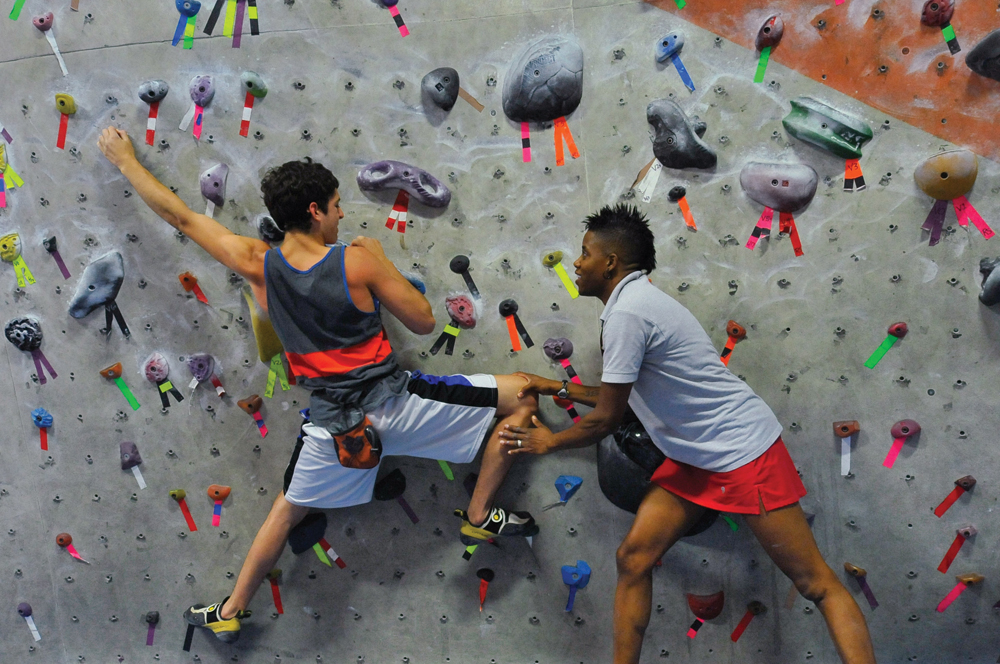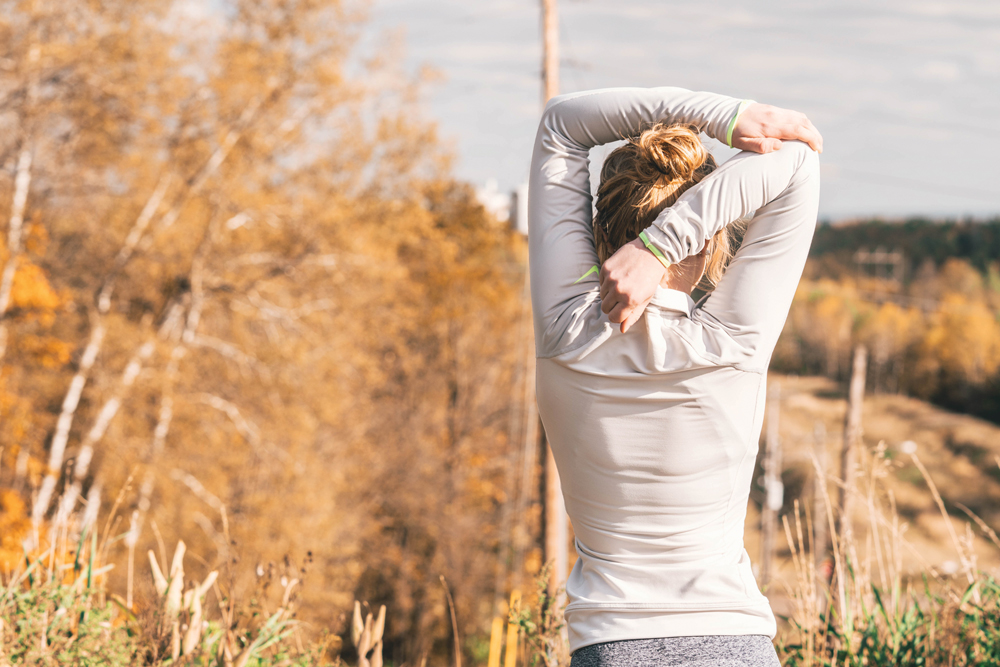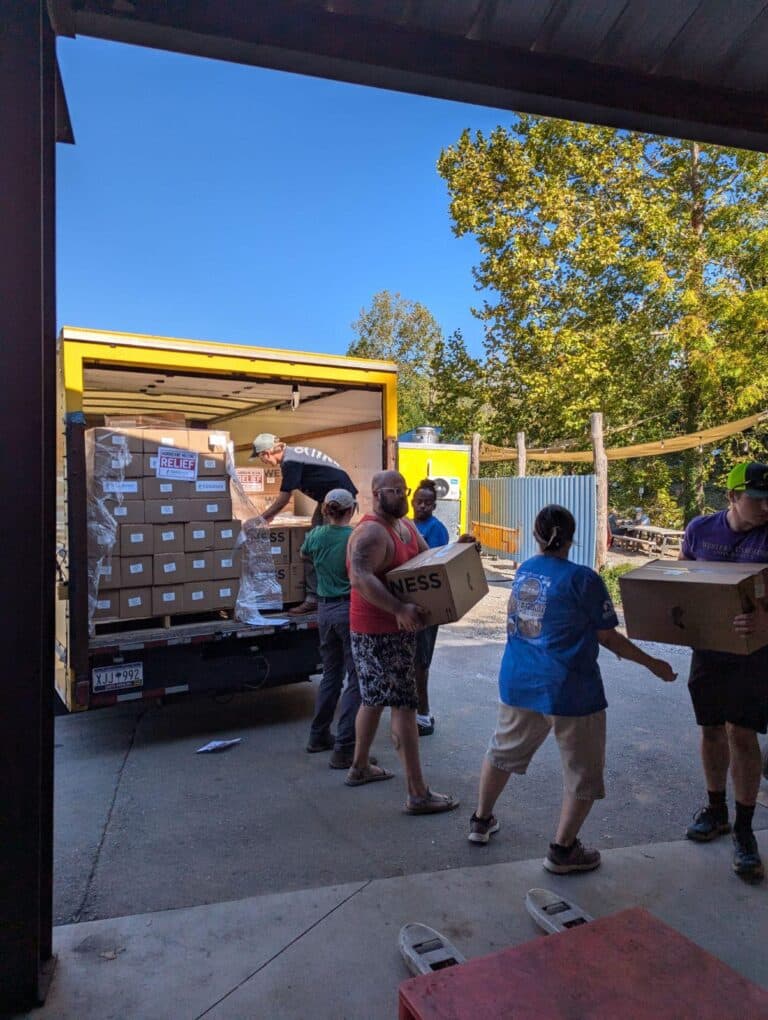Health Hacks and Fitness Secrets from Top Coaches, Athletes, and Experts to make your New Year’s Resolutions Stick.
A new year is here and everyone is busy making plans to make 2019 better than ever. Whether you want to spend more time outdoors, focus on your mental health, or hike the entire A.T., these athletes, coaches, and instructors have tips for keeping the momentum going throughout the year.
Figure out your motivation
“What are your goals?” Aaron T. Ostwald said. “Do you want to lose weight? Do you want to get stronger? Do you want to get faster? Know that going into it, let’s focus on that.”
Since 2011, Ostwald has taught thousands of exercise classes at the YMCA and OrangeTheory in Asheville, N.C. Whether it’s cycling, TRX, or high intensity interval training, he focuses on keeping people engaged with the activity at hand.
Once you figure out the why behind your resolution, the next step is to figure out how you are going to accomplish those goals.
“How do you find motivation at home if you’re surrounded by your television, your cell phone?” Ostwald said. “We’ve got to remove all those external factors that are going to pull our attention away. How self-motivated are you to dedicate 20 to 30 minutes of your time every day to working on something?”
That starts with recognizing your own strengths and weaknesses.
“Knowing, hey I’m a morning person, let’s keep this motivation going. Get me in there, get my workout in, and I don’t have to worry about it for the rest of the day,” Ostwald said. “Whereas maybe you’re a night person. With your work schedule, how does that come into play?”
If you’re someone who struggles with self-motivation and finding time in a busy day, look for “somebody to help you along and hold you accountable.” It might be a friend, a loved one, or an instructor that challenges you to make the time.
“It’s not about speed, it’s not about how many reps you can bang out here in the fastest amount of time,” Ostwald said.
Instead, focus on good form and technique, practicing safely and having fun. Ostwald also suggested mixing things up, trying new ways of exercising and being active.
“Don’t get hung up on one specific thing because that’s how we get in a rut and we get bored and then we just quit altogether,” he said.
Start slowly
In completing the A.T. three times, hiking on six continents, and setting a number of fastest known times while on the trails, Jennifer Pharr Davis has learned a lot about preparation through her own success and missteps. She is also the author of The Pursuit of Endurance, a book about incredible human feats of physical and mental strength, and founder of Blue Ridge Hiking Company.
“A big mistake is biting off something that is too big around the start of the year,” she said. “It’s a lot more important to create an exercise routine that’s going to be sustainable and meet you where you’re at in your life as opposed to signing up for this really big challenge and getting hurt or burnt out within the first two months of the year. Being realistic, sustainable, starting small, and building your way up is really important, even if you want to do something really long and extreme and intense.”
Starting off slowly not only helps build a routine, it is also better for your body.
“Injuries are more common when you start off trying to do too much too quickly and you don’t build up to it,” Pharr Davis said. “We encourage them to start with any kind of cardio, anything they can fit in their day. Going for walks, getting on a bike, running around their neighborhood, anything to get their heart rate up.”
When preparing for longer hiking trips, she focuses on adding weight to her pack and elevation training to build up climbing muscles in the leg. Through it all, she said, listen to what your body is telling you.
“Have a relationship with your body and try to give it what it needs,” Pharr Davis said. “Some days it’s going to need days off and rest. Then some days you’re going to be able to push it beyond where it wants to go. Be a willing participant in a relationship as opposed to always trying to force your will on your body.”
The small things add up
Anna Levesque, author of Yoga for Paddling, has more than 25 years of paddling and yoga experience. She also produced Girls at Play, the first whitewater kayak instructional DVD for women.
In addition to teaching SUP yoga and whitewater kayaking, the woman behind Mind Body Paddle consults with individuals on their specific health concerns.
“The small things we do every day, like drinking warm lemon water to help the detoxification process and help strengthen the kidneys, is going to contribute to your health more than doing an hour and a half of yoga class once a month or once every two weeks,” Levesque said. “Walking or running on a consistent basis, getting outside on a consistent basis, is going to do more for you than sitting at your desk all week and then spending all day outside on Saturday.”
The “what” you do every day is not as important as making sure you do something every day.
“The idea is to not give up,” Levesque said. “If you can only do 10 minutes, do the 10 minutes… There’s this myth that if I don’t do the whole workout, I shouldn’t do it at all.”
Levesque follows the same routine every morning:
1.“I get up and I scrape my tongue. It helps clear the bacteria that causes bad breath out of the mouth and it just feels good. The first time you do it, you’ll never go back to not doing it. You’ll see what comes off your tongue.”
2.“Then I swish oil, sesame or coconut, in my mouth for ten minutes, brush my teeth, and then I drink warm lemon water.
3.“I do a yoga practice every morning. Sometimes it’s 10 minutes; sometimes it’s an hour. I meditate every morning, 15 to 20 minutes. Then I start my day.
A bedtime routine is just as important.
“Turning off screens an hour before bed is a big one,” Levesque said. “Drink herbal teas, baths, take a gentle night walk, and make sure your room is really dark.”
She recommends going to bed by 10 p.m. and sleeping eight hours every night to get all of the benefits from that restorative time.
Practice mindful breathing
Brandon Copeland’s personal yoga practice grew into Khepera Wellness when he started teaching his style of trap yoga around the D.C. area. This practice combines the traditional Ashtanga yoga poses with the intense beat of trap music.
“Ultimately, the yoga practice is free,” Copeland said. “It serves as an opportunity for me to teach something to people that they can take with them and consistently better their lives.”
Almost every day, through yoga and meditation, Copeland takes time to connect with his breath, controlling and valuing the in and out movement.
“Your mind clears if you’re breathing correctly and then that gives you space to either delve into things that you feel emotionally and let them go or sit there and observe them and kind of be at peace with them,” he said.
Mindfully breathing helps you connect further with the rest of your body.
“You can feel all these things that you normally perceive through the body on purpose,” Copeland said. “That should physically take all of the stress out of you, mentally give you space to relax, and emotionally give you balance so that you aren’t necessarily feeling sadness or happiness or anything on a really high level. Once that is achieved, then you are able to just be still and observe the connection you have to this moment.”
As with any kind of mental or physical exercise, the important thing is to figure out what your practice looks like.
“I think it’s dangerous when people try to tell you how,” Copeland said. “Everybody is different. Go to a class and if it doesn’t feel right, now you know you don’t like going to classes. So do it at home. Maybe you try a private teacher or maybe you need to find another group… Some people will do that one arm handstand really well and they love that. Some people want to lie down for an hour and that’s just as valid.”

Embrace the fear
“The lack of embracing the fear as it comes up first is the catalyst of what brings on the mistakes. We have to deal with self first before we can deal with equipment, before we can deal with the next move that’s way up there.” -Emily Taylor
After more than 20 years of climbing and coaching climbers, Emily Taylor is now coaching the coaches to help gyms build up their youth programs. In addition to her own climbing accolades, the founder of Taylored Fit Solutions and Brown Girls Climbing has worked with climbers such as Kai Lightner to create individual training regimens.
She works with clients, especially climbers of color, to address points of anxiety and panic instead of ignoring and pushing them to the side.
“The lack of embracing the fear as it comes up first is the catalyst of what brings on the mistakes,” Taylor said. “We have to deal with self first before we can deal with equipment, before we can deal with the next move that’s way up there… My theory is we acknowledge it and we go oh, here it is again. Let’s embrace this as long as we need to embrace this, right here, right now. To do the other can become dangerous.”
One way Taylor applies this in her own life is by keeping track of what she did and how she is feeling throughout the week.
“Journaling is a huge part of practice,” she said. “Everybody has their own methodology. I enjoy actually physically writing with a pen or pencil in my hand… I have my very first tick list and climbing journal from 20 years ago, how and what I thought. I got started when I was 21. Some of it is still the same, some of it has changed.”
Carrying them with her whenever she moves, Taylor still uses those journals in training other climbers. Reflecting back on them, she can see what worked and the progress she has made.
Taylor said another important piece of working on her mental fitness is maintaining personal relationships offline.
“The other part I find really important is disconnecting from media and connecting with social connections, things like making sure I check in with someone and making sure they’re okay at least once a day,” she said.
Everyone’s process is different
“It’s so individual,” Dr. Mark Cucuzzella said. “What are the drivers to someone becoming unhealthy? Is it stress, sleep deprivation, diet, all of the above? Each person has to identify the things in their life that is driving them to poor health. If you can get that stuff sorted out, then you can maintain your health.”
Cucuzzella, a professor at West Virginia University School of Medicine, helps adults work on their metabolic health, obesity, and diabetes reversal. He said each person should work with his or her personal physician to address specific health concerns.
“Some things are out of your control, but most things are actually in your control,” he said. “You don’t just randomly get high blood pressure one day. It’s a process.”
Although health is individualized, Cucuzzella said there are a few things that apply to everyone.
“The three things that together, are a disaster, are added sugar, processed carbohydrates, and refined vegetable oils,” he said. “Those three things really drive metabolic diseases. Trying to avoid those foods will go a long way to making your body work better.”
Cucuzzella is also the owner of Two Rivers Treads, the country’s first minimalist shoe store, and works with runners to correct their gait. He says walking and running are the best forms of exercise because you can step out your front door and be outside.
“If you don’t look forward to doing something, you’re not going to be able to keep doing it,” Cucuzzella said. “So whatever you decide to do, it needs to be fun, sustainable, and easily available to you. If it takes a half hour to drive somewhere and change, that’s probably not going to work. So it has to fit into your life.”








